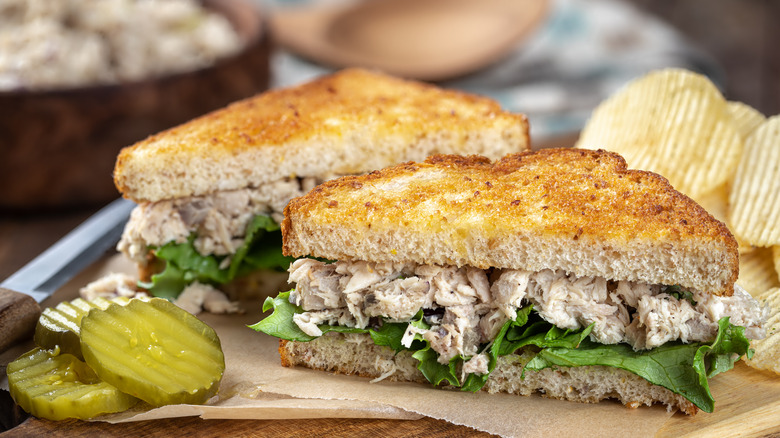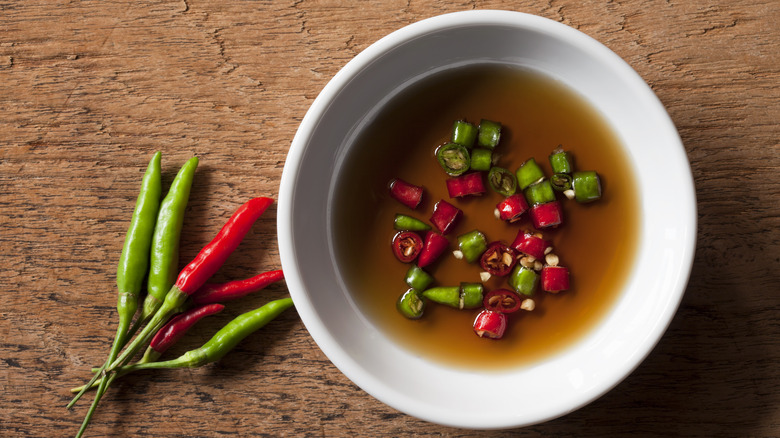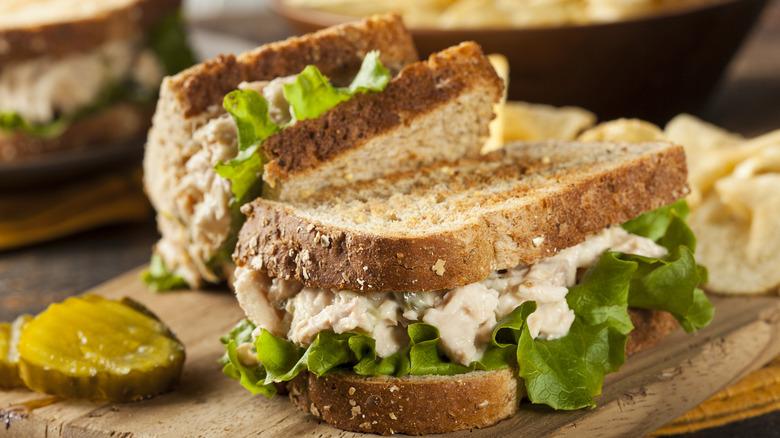Upgrade Your Tuna Salad Sandwiches With One Umami-Packed Ingredient
One of the fastest ways to improve your tuna salad is to amp up its savory flavor with another ingredient of the sea: Fish sauce. This backbone of multiple Southeast Asian cuisines is made by fermenting anchovies and collecting the liquid they give off. The result is a sauce that can taste overwhelmingly salty alone but becomes magical when added to other ingredients in the correct quantity.
Fish sauce is packed with glutamates, the amino acids that trigger the savory umami flavor. Anchovies are already high in glutamates, to begin with, and the salting and fermentation process produces them in even greater quantities. When fish sauce is added to tuna salad it shouldn't overpower the other flavors of the dish. Add a small amount (start by trying half a teaspoon) and it will increase the flavor of the tuna itself. Other umami-rich ingredients like Worcestershire sauce or soy sauce can bring in their respective strong flavors, throwing off the balance of the dish. Conversely, fish sauce's oceanic flavor should settle into the background.
Choosing and storing fish sauce
When selecting a bottle of fish sauce, look for one with a short ingredient list featuring items like water, salt, and anchovies. Some brands will come loaded with additives that can affect the taste. Brands like Viet Huong Three Crabs Fish Sauce or Red Boat Fish Sauce are popular for their balanced flavors and simple ingredients. Both are available online and at certain supermarket chains. Some cooks keep a bottle of inexpensive sauce for cooking and a more expensive bottle for making uncooked dipping sauces or dressings. You might see designations such as 40N on some brands. This refers to the nitrogen and protein levels found in each liter of sauce. Any bottle displaying 30N or higher will generally indicate a more complex, high-quality fish sauce.
Storing the sauce is very easy. Because it is fermented and packed with sodium, it can last several years without adverse effects. Although the condiment does not need to be refrigerated, certain high-nitrogen fish sauces can build up gas at room temperature. This is harmless but can be disconcerting when opening a bottle. Refrigerating a bottle can also keep its color and flavor from subtly changing over time. If you store the sauce at room temperature, keep it in a low-lit and cool area.
Tips for the ultimate tuna salad
Fish sauce helps make your tuna salad extra savory, but plenty of techniques and ingredients will also help build the ultimate sandwich. To begin with, you want to start with high-quality tuna (check in with an expert for the best type of tuna to use for tuna salad.) Water-packed tuna will allow the salad's other flavorings to come to the fore, while oil-packed tuna will have a more substantial presence in the final product. If using an oil-packed product, use less mayo to prevent the salad from becoming greasy due to the tuna's higher fat content.
Speaking of mayo, using a classic homemade aioli is an easy way to amp up flavor. Of course, you don't need to use mayo at all. Using good olive oil is a great way to approximate mayo's richness. Any style of the salad will taste great with ingredients like capers and olives, whose briny pops of flavor are a classic addition to seafood. Finely chopped herbs like parsley are a great addition, and you can reach for whichever herbs you like. For example, go for Herbs de Provence for something reminiscent of salad Niçoise, another classic tuna dish. Ultimately, the sky is the limit, and you can put any personal spin on tuna salad that strikes your fancy.



